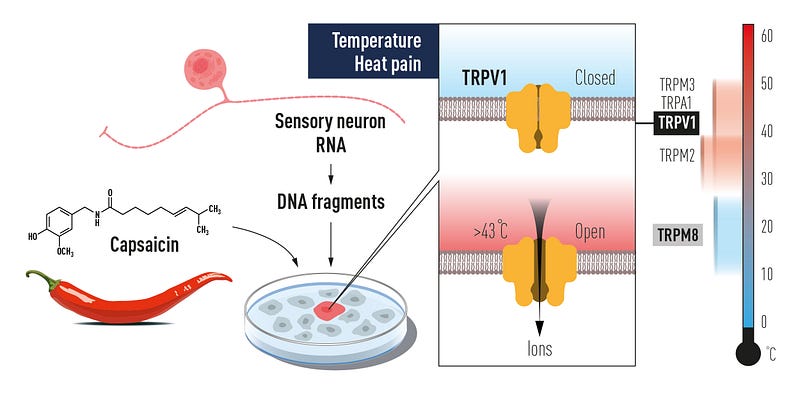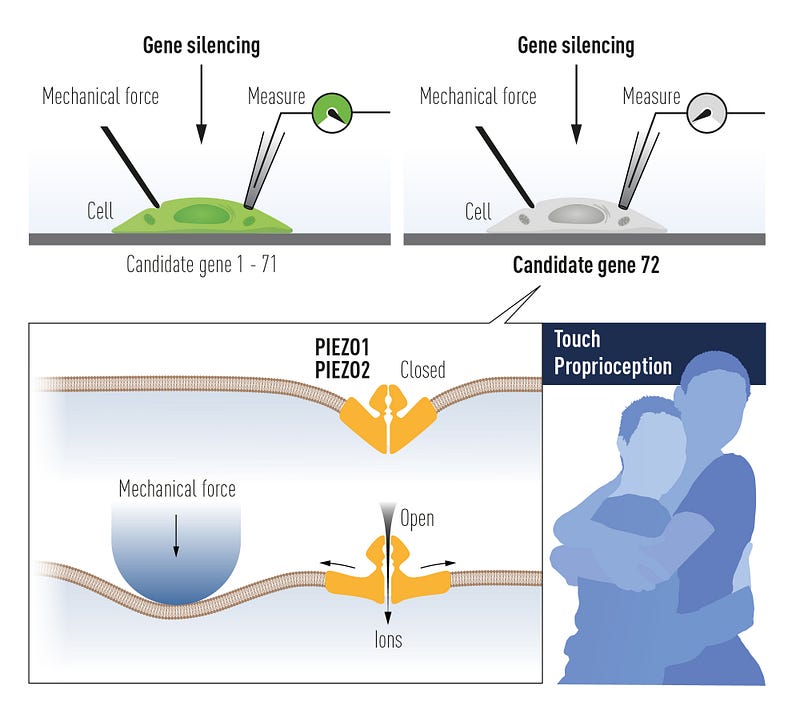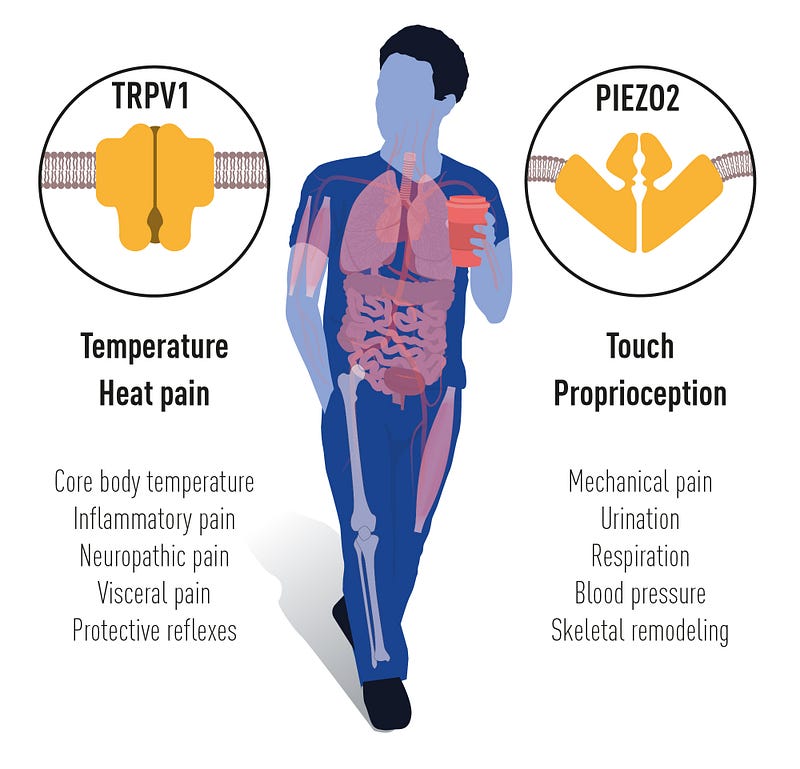
Physiologist David Julius and neuroscientist Ardem Patapoutian were awarded for the Nobel Prize of medicine, thanks to their discovery of temperature and touch receptor cells .Their “revolutionary discoveries” have “made it possible to understand how heat, cold and mechanical force can initiate the nerve impulses that allow us to perceive and adapt to the world,” said the Nobel jury in Stockholm.
Who are David Julius and Ardem Patapoutian ?

David Julius, 65, a professor at the University of California, used capsaicin, an active component in chili peppers that causes a burning sensation, to identify a sensor in nerve endings in the skin that responds to heat.
Ardem Patapoutian, a professor at Scripps Research in California born in 1967, used pressure-sensitive cells to discover a new class of sensors that respond to mechanical stimuli in the skin and internal organs. These cells are used for haptic feedback design and are on our smartphones thanks to the haptics android and iphone.
When science meets the Temperature perception.
Eat a chilli pepper, a mint candy, wasabi… We often associate the sensations felt on these occasions with hot or cold. This is not surprising, because the team of David Julius, at the University of California at San Francisco, showed that the receptors involved in these perceptions are similar. This work has just been awarded half of the 2021 Nobel Prize in Medicine. This work is also correlated to haptics feedback, the feel of touch that we could perceive with haptics on android or iphone.
In the 1990s, this group studied the TRPV1 receptor (for transient receptor potential vanilloid 1) activated by capsaicin, the “very” active principle in peppers, and similar compounds of the vanilloid family, such as… vanillin. They then discovered that this receptor is also sensitive to heat (above 44 ° C). In response to one of these stimuli, TRPV1, located at the end of sensitive neurons, changes its conformation, which opens it up: calcium and sodium ions then enter the cell and trigger the neuronal signal.

The family of these ion channels then spread with the discovery, by the same group, of the receptor TRPM8, sensitive to menthol, as well as to cold, and that of TRPA1 activated by compounds of mustard and wasabi. It is this that causes tears and coughs when ingesting food described as “strong”. The structure of these different receptors, essential for understanding their function, was revealed by electron cryomicroscopy (a sample is frozen before being observed under an electron microscope).
The role of these proteins goes beyond simple taste perception, as they also contribute to the perception of pain, as David Julius explained in For Science a few years ago, via the pathways of nociception, those which indicate to the central nervous system a very pronounced stimulus such as a burn.
The hunt for sensory receptors
After spending about a year poking nerve cells in lab dishes, Patapoutian discovered a receptor that opens in response to mechanical pressure. Called PIEZO1, it’s named after the Greek word for pressure. A second receptor, called PIEZO2, also allows people to feel touch.

PIEZO2 is the receptor on nerve cells in the skin called Merkel cells. They sense light touches and caresses. This receptor also helps nerves in the lungs keep the organs from overinflating. It even plays a role in bladder and bowel functions. And children born without PIEZO2 receptors have balance problems; they can’t tell where their limbs are, Koroshetz explains. “They have to look to see where their fingers are when they reach out to grab something.” Abnormal responses by this receptor may play a role in glaucoma, an eye disease, and high blood pressure, too.
Touch and temperature receptors may help us sense pain, too. Some companies are trying to block these heat receptors. Doing so may relieve pain. But drug companies have struggled to find new medicines that would work through these receptors, says Gary Lewin. His lab at the Max Delbrück Center for Molecular Medicine in Berlin studies the molecular action of how the body responds to sensory stimulations.
It all makes sense!
The groundbreaking discoveries of the TRPV1, TRPM8, and Piezo channels by this year’s Nobel Prize laureates have allowed us to understand how heat, cold and mechanical forces can initiate the nerve impulses that allow us to perceive and adapt to the world around us. The TRP channels are central to our ability to perceive temperature. The Piezo2 channel endows us with the sense of touch and the ability to feel the position and movement of our body parts. TRP and Piezo channels also contribute to numerous additional physiological functions that depend on sensing temperature or mechanical stimuli. Intensive ongoing research originating from this year’s Nobel Prize awarded discoveries focuses on elucidating their functions in a variety of physiological processes. This knowledge is being used to develop treatments for a wide range of disease conditions, including chronic pain.

Who is Interhaptics?
Interhaptics is a software company specialized in haptics. Interhaptics provides hand interactions and haptic feedback development and deployment tools for virtual reality (VR), mixed reality (MR), mobile haptic for iphone and android, augmented reality (AR), and console applications. Interhaptics’ mission is to enable the growth of a scalable haptics ecosystem. Interhaptics strives to deliver top-notch development tools for the VR/MR/AR, mobile, and console developer community, and the interoperability of haptics-enabled content across any haptics-enabled platform.







